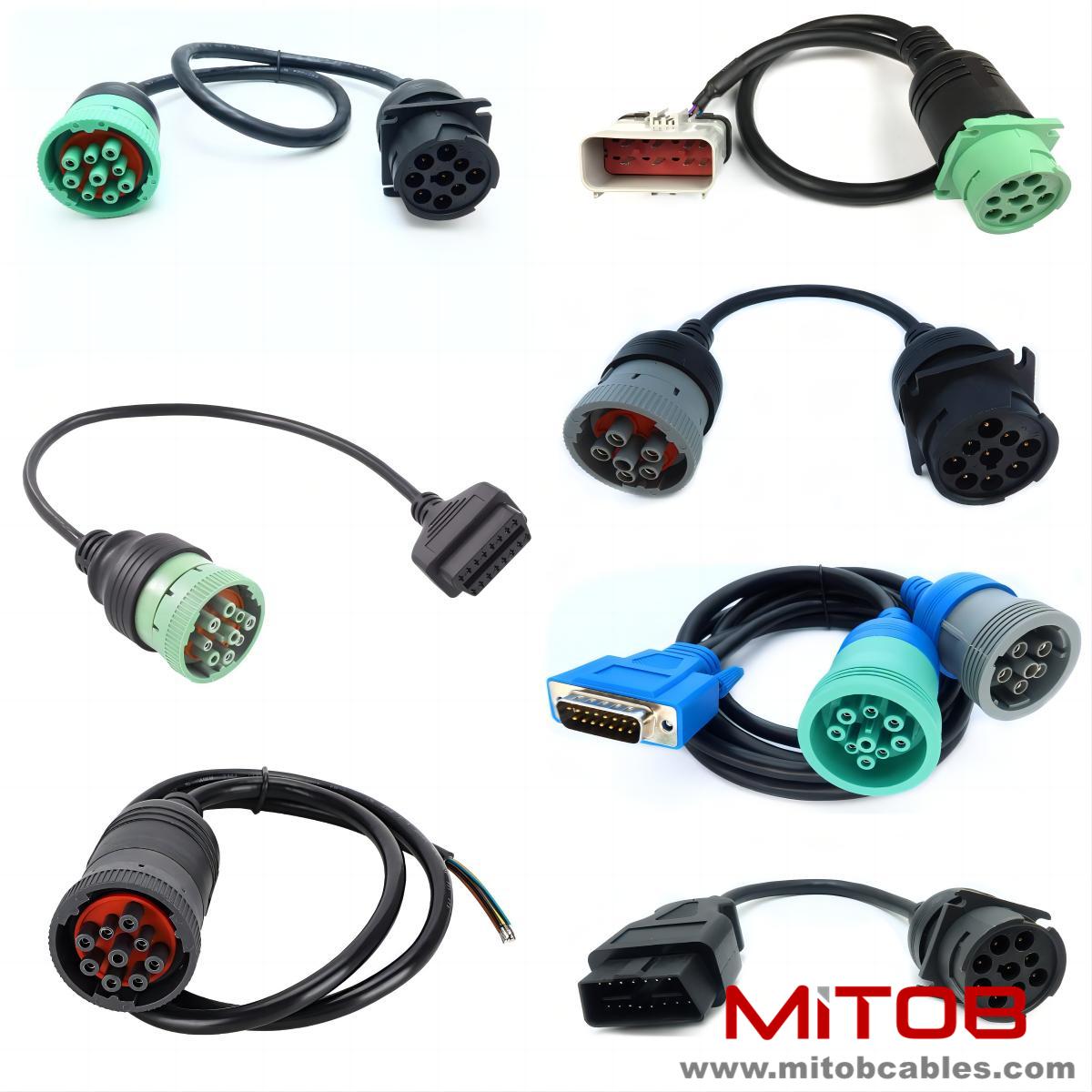What methods can improve the compatibility of J1939 to OBD2 cables?
Here are some methods to improve the compatibility of J1939 to OBD2 cables:
Optimize protocol conversion circuit design
Adopting high-performance conversion chips: Select chips with advanced protocol processing capabilities that can more accurately and efficiently process the conversion between J1939 and OBD2 protocols, reduce data transmission errors and delays, and improve compatibility.
Improve circuit layout: Reasonably plan the position of each component in the circuit, shorten the signal transmission path, and reduce electromagnetic interference.
Improve the performance of cable materials
Selecting high-quality conductor materials: high-purity copper is used as the cable conductor, which has the characteristics of low resistance and high conductivity. It can effectively reduce signal attenuation and distortion during transmission, ensure the quality of data transmission, and enable the cable to maintain good compatibility in different electrical environments.
Using high-performance insulation materials: Choose materials with good insulation and temperature resistance, such as polytetrafluoroethylene (PTFE). This material not only provides reliable electrical insulation, but also maintains stable performance in harsh environments such as high temperature and humidity, preventing mutual interference of signals inside the cable and improving the compatibility of the cable in various vehicle working environments.

Conduct rigorous compatibility testing
Multiple vehicle type testing: Conduct extensive testing on vehicles of different brands and models during cable development and production processes. Including various commercial vehicles, passenger cars, and vehicles produced in different years, to ensure that the cables are compatible with the J1939 and OBD2 interfaces of various vehicles, accurately achieving protocol conversion and data transmission functions.
Different diagnostic equipment testing: Use various common OBD2 diagnostic equipment and monitoring equipment related to J1939 for connection testing, check whether the cable can work properly when used in conjunction with different devices, whether there are problems such as incompatible data transmission or device recognition, and optimize the design and performance of the cable in a timely manner based on the test results.
Follow relevant standards and specifications
International standards: Strictly follow the internationally recognized automotive communication protocol standards. Ensure that the design, manufacturing, and performance of cables comply with the requirements of these standards, thereby ensuring the universality and compatibility of cables worldwide.
Industry standards: Refer to relevant standards and recommendations within the automotive industry. These specifications provide more specific design guidelines and practical experience, which can help improve the compatibility of cables with various vehicle systems.
Provide software upgrade support
Updated firmware: The protocol conversion module of the cable adopts an updated firmware design. When encountering new vehicle systems or communication protocol versions, the cable can be adapted to new requirements and compatibility can be improved through software upgrades.
Remote upgrade function: Equip cables with remote upgrade function, making it convenient for users to obtain the latest software version in a timely manner without replacing hardware. This can continuously optimize the compatibility of cables, extend the service life and scope of application of cables with the development of vehicle technology and the launch of new models.
Contact: Kevin
Phone: 0086-18823374992
E-mail: kevin@mitobcable.com
Whatsapp:
Add: Bld B2, Floor7 , Xinghe Zhongkai AI Industrial Park, Zhongkai High-tech Zone, Huizhou,China